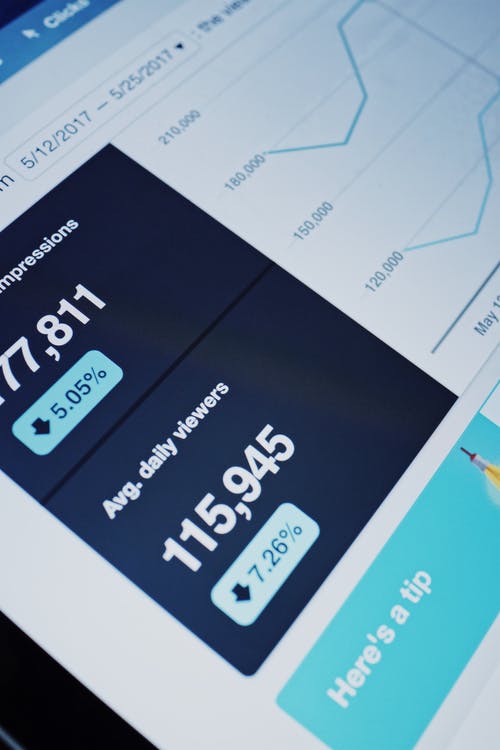

Published July 24, 2018
Tags:

If you want to be successful with your online advertising, you need to first understand how to read your results. There’s no sense in funnelling your money into something that won’t pay off, and most marketing platforms come with the expectation that you already understand a compendium of marketing terms and buzzwords. There is a breathtaking amount of depth behind the metrics available to you, but in this article we’re going to focus on the basics. Boiled down to its most basic form, online metrics are focused around one essential building block: the impression.
Impressions are used as the basic performance measure of any given online ad. Basically, an impression is an instance that your ad was loaded onto a website. Pretty simple, right? Let's make it more complicated. Generally, impressions are split into two categories in today's climate: served and viewed. In general, served impressions count any time your ad was loaded onto a page, whereas viewed impressions only count ads that users scrolled into view of.
Initially, served impressions were the only type of impression that were delivered to customers, which is fine. However, an attentive marketer can tell you that this comes with a distinct caveat: even though your ad was loaded onto the page, that doesn’t mean that the reader actually scrolled down to the position that your ad was served. The poor thing could has been hovering right outside your audience's view without ever getting its moment in the spotlight. This is a fairly important distinction to make because not all served impressions have a chance to become a conversion— also known as a lead or a sale.
Recent advances in online marketing have drawn a distinction between the two, and a lot of focus is being put into making sure that viewed impressions become the standard instead of served impressions. At the time of writing this hasn’t happened yet, so in the meantime it’s important to make sure that you’re paying attention to which type of impression you’re buying. For now, many popular sites give you both numbers so that you can parse the data for yourself. If a distinction isn’t made, chances are they’re reporting a served impression. Keep in mind that viewed impressions have an implicit guarantee baked into them; until they become the norm buying viewed impressions only may come at a premium depending on your advertiser.
Good question. Unfortunately, this is a question you need to answer for yourself. These are most often sold according to availability (though sometimes can be purchased to deliver until you hit the goal number). Let’s liken availability to fishing: it depends on when you’re throwing the net, what the population is, how large a net you’re throwing, and whose boat you’re fishing from.
Returning to non-metaphorical representations, this is all affected by the specificity of your search criteria, by your geographic location and its population, and by how many viewers your publisher receives. As every fisherman/ advertiser will tell you, everything under the sun— including the time of day and day of the week—influences how many impressions are available to you.
Due to the extreme number of variables involved in calculating that number, this is a question better answered by the website you’re publishing from. The best guidance I can give is to define the way impressions are sold before you shake on the deal. do your research and find out how they track their metrics, what their optimal viewing times are, and keep track of any additional fees that would be accrued should you vie for more specific delivery. Once that's done, you can talk to your advertiser about your purchasing model.
Yes. Most advertisers have multiple purchase options available to their clients. Some don't, and in those cases most of their advertising is probably a CPM model (described below). Generally speaking, however, there are three common purchasing formats online:
This is far and away the most common format. I know, I know. The 'M' is kind of misleading. It’s a throwback to latin numerals, wherein one-thousand was represented by the numeral 'M'. Basically, you pledge to buy a bundle of impressions by the thousand for X amount of dollars and the publisher delivers them on their website. Depending on the advertiser’s traffic and rates, you can often adjust your impressions to run throughout a certain period or front-loaded (all at once as fast as possible), or you can run in certain geographic zones or times of day. U sually, the more specific you are, the higher the cost will be.
Also referred to as Cost-per-click (or CPC), these are delivered much like CPM ads are delivered, but instead of paying every time the ad is served or displayed, instead you only pay for the ones that readers click on. This has the benefit of guaranteeing that you only pay for interested customers who took action. The catch, of course, is that you’re paying out the nose for that benefit—and I mean a lot more.
Sponsorships in online advertising work much the same as they do in any other medium: You buy the space, and that publisher puts your name or artwork in a prominent position on their product for a set amount of time. Sponsorships tend to have both high visibility and high costs. While they often perform better than other ad spaces, they typically don’t come with a guaranteed number of impressions—which makes sense, because if you’re sponsoring an ice cream social they can’t guarantee how many people will show up or how much interest it will garner. You’ll have to evaluate the risk vs. reward of each sponsorship on a case-by-case basis, though most publishers will find a way to guarantee you get your money’s worth.
So, there you have it: a long-winded breakdown of the basics of online advertising metrics. If you’re still hungry for more info, feel free to give me a shout to continue the conversation. If you’re still digesting, stay tuned for further details on metrics and online marketing.
Copyright © 2021, Tru North Design Co, LLC. All Rights Reserved.